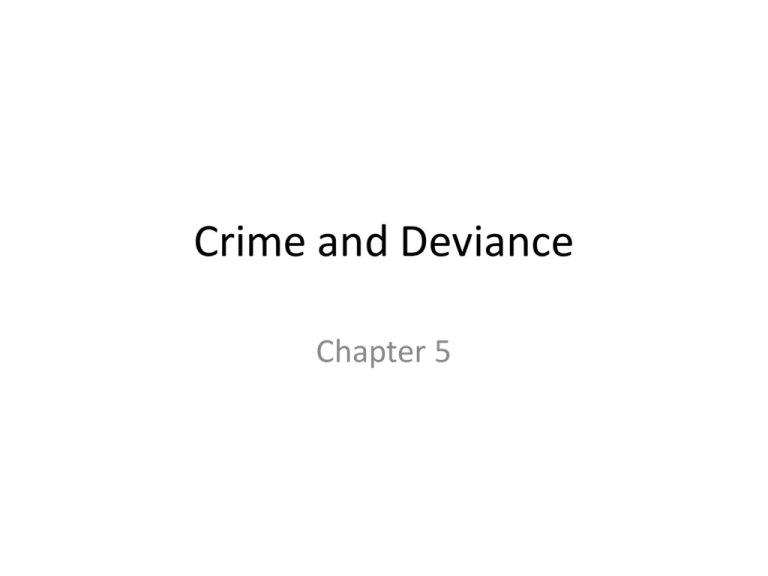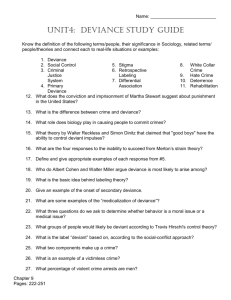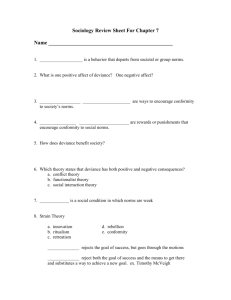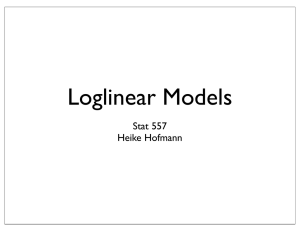Crime and Deviance
advertisement

Crime and Deviance Chapter 5 The Nature of Deviance • Deviance: behavior a considerable number of people in a society view as reprehensible and intolerable • The Relativity of Deviance – Deviance relative and matter of social definition • Etoro of New Guinea • Society establishes social norms – When norms violated, behavior considered deviant • Definitions of deviance are relative to the values and beliefs of society • Defining deviance is a social and historical construct • What is an example of a difference in deviant behavior across culture? Across historical time period? Crime • An act, or the omission of an act, that is a violation of a federal, state, or local criminal law for which the state can apply sanctions. – Put simply-Breaking the law and being punished Crime • Universality-Crime is Universal-In all societies • Relativity-There is nothing inherent in an act that makes an act wrong, criminal, or deviant. Crimes depend on societal norms – Conceptions of what constitutes a crime varies across time and societies. What is this called? Significance of Relativity of Crime • Understanding what is considered a social problem and how certain problems are constructed as the social structure changes – Changing attitudes – The political nature of defining crime and deviance-Drugs and sexuality• The case of marijuana – The effect of society on the individual The Sociological Imagination Critical Constructionism – Argues that social problems are constructed, conceived, and presented to the public in ways that reflect the interests of those in power, the elite. – Social Construction of Drugs-Definitions about drugs are based on meanings that people in groups have imputed to certain substances. Critical Constructionism-Relativity • Critical constructionists ask the question, why are some drugs criminalized while others are not? Is it based on relative harm done? – Does drug policy and concern about drug use make sense when looking at objective reality? • I.e- Statistics regarding the harm done by certain drugs (Alcohol vs Marijuana) Subjective vs. Objective View of Drug Abuse Objective component is physical, psychological, or social evidence of harm Subjective component is people’s perceptions about the consequences Example: Marijuana vs. Alcohol Subjectively our society believes that marijuana is harmful and should remain illegal, while alcohol is relatively harmless and should stay legal Objectively there is little evidence that marijuana is harmful but much evidence of alcohol and tobacco and associated dangers. Copyright © Allyn & Bacon 2010 The Nature of Deviance • Dysfunctions of Deviance – Interferes with institutional life – Can lower morale of non-deviants – Erodes societal trust • Functions of Deviance – – – – Promotes conformity Clarifies boundaries Strengthens the censuring group Warn non-deviant majority Social Control and Deviance • Social control regulates behavior within a society – Functionalists see it as indispensable – Conflict theorists see it as tool of powerful groups The American Punishment Frenzy • Punitive policies • Imprisonment of non-violent offenders • 1980’s-The drug war – Mandatory minimums – Three strikes laws – Plea bargains – In 2007, the United States had the highest incarceration rate in the world • Over 7 million people in prison, jail, or under correctional supervision






